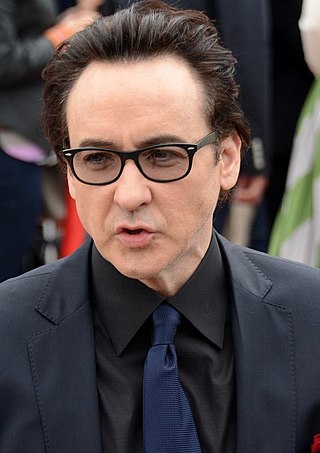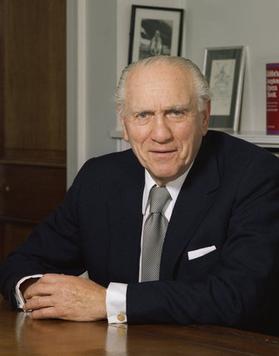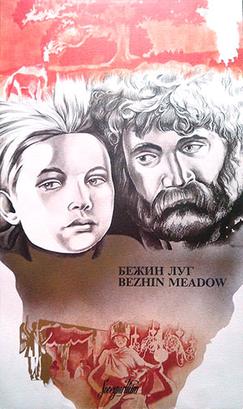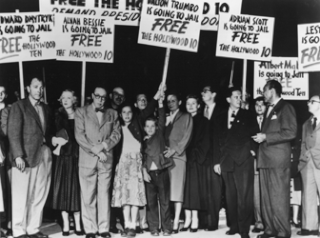Formalist film theory is an approach to film theory that is focused on the formal or technical elements of a film: i.e., the lighting, scoring, sound and set design, use of color, shot composition, and editing. This approach was proposed by Hugo Münsterberg, Rudolf Arnheim, Sergei Eisenstein, and Béla Balázs. Today, it is a major approach in film studies.

Sergei Mikhailovich Eisenstein was a Soviet film director, screenwriter, film editor and film theorist. He was a pioneer in the theory and practice of montage. He is noted in particular for his silent films Strike (1925), Battleship Potemkin (1925) and October (1928), as well as the historical epics Alexander Nevsky (1938) and Ivan the Terrible. In its 2012 decennial poll, the magazine Sight & Sound named his Battleship Potemkin the 11th-greatest film of all time.

John Paul Cusack is an American actor. Cusack began acting in films during the 1980s, starring in coming-of-age dramedies such as Sixteen Candles (1984), The Sure Thing (1985), Stand by Me (1986), and Say Anything... (1989). He then started appearing in independent films such as Eight Men Out (1988), The Grifters (1990), True Colors (1991), and Money for Nothing (1993). Cusack began appearing as a leading man in such films as Bullets Over Broadway (1994), Grosse Pointe Blank (1997), The Thin Red Line (1998), Being John Malkovich (1999), High Fidelity (2000), America's Sweethearts (2001), Max (2002), and Runaway Jury (2003). He also starred in films such as The Ice Harvest (2005), The Contract (2006), 1408 (2007), War, Inc. (2008), Hot Tub Time Machine (2010), The Raven (2012), The Frozen Ground (2013), and Dragon Blade (2015).

William Richard Morris, Viscount Nuffield,, was an English motor manufacturer and philanthropist. He was the founder of Morris Motors Limited and is remembered as the founder of the Nuffield Foundation, the Nuffield Trust and Nuffield College, Oxford, as well as being involved in his role as President of BUPA in creating what is now Nuffield Health. He took his title from the village of Nuffield in Oxfordshire, where he lived.

Marsha Hunt was an American actress with a career spanning nearly 80 years. She was blacklisted by Hollywood film studio executives in the 1950s during McCarthyism.

The American Mercury was an American magazine published from 1924 to 1981. It was founded as the brainchild of H. L. Mencken and drama critic George Jean Nathan. The magazine featured writing by some of the most important writers in the United States through the 1920s and 1930s.

Ivor Goldsmid Samuel Montagu was an English filmmaker, screenwriter, producer, film critic, writer, table tennis player, and Communist activist and spy in the 1930s. He helped to develop a lively intellectual film culture in Britain during the interwar years, and was also the founder of the International Table Tennis Federation.

Soviet montage theory is an approach to understanding and creating cinema that relies heavily upon editing. It is the principal contribution of Soviet film theorists to global cinema, and brought formalism to bear on filmmaking.

Sidney Lewis Bernstein, Baron Bernstein was a British businessman and media executive who was the founding chairman of the London-based Granada Group and the founder of the Manchester-based Granada Television in 1954. Granada was one of the original four ITA franchisees. He believed the North's media industry had potential to be cultivated.
Joseph Ignatius Breen was an American film censor with the Motion Picture Producers and Distributors of America who applied the Hays Code to film production.

Bezhin Meadow is a 1937 Soviet propaganda film, famous for having been suppressed and believed destroyed before its completion. Directed by Sergei Eisenstein, it tells the story of a young farm boy whose father attempts to betray the government for political reasons by sabotaging the year's harvest and the son's efforts to stop his own father to protect the Soviet state, culminating in the boy's murder and a social uprising. The film draws its title from a story by Ivan Turgenev, but is based on the life story of Pavlik Morozov, a young Russian boy who became a political martyr following his death in 1932, after he supposedly denounced his father to Soviet government authorities and subsequently died at the hands of his family. Pavlik Morozov was immortalized in school programs, poetry, music, and film.

Grigori Vasilyevich Aleksandrov or Alexandrov was a prominent Soviet film director who was named a People's Artist of the USSR in 1947 and a Hero of Socialist Labour in 1973. He was awarded the Stalin Prizes for 1941 and 1950.
John Berry was an American film director, who went into exile in France when his career was interrupted by the Hollywood blacklist.
Red fascism is a term equating Stalinism and other variants of Marxism–Leninism with fascism. Accusations that the leaders of the Soviet Union during the Stalin era acted as "red fascists" have come from left-wing figures who identified as anarchists, left communists, social democrats and other democratic socialists, as well as liberals, and among right-wing circles both closer to and further from the centre.

The Hollywood blacklist was an entertainment industry blacklist put in effect in the mid-20th century in the United States during the early years of the Cold War, in Hollywood and elsewhere. Actors, screenwriters, directors, musicians, and other American entertainment professionals were barred from work by the studios.

Haitian cinema includes the films and filmmakers of Haiti. The Haitian diaspora is active in the industry. Oppressive dictators and economic struggles have limited production.
Richard J. Collins was an American producer, director and screenwriter prominent in Hollywood during the 1940s, 1950s and 1960s. He worked on several notable television programs including Bonanza, General Electric Theater, Matlock and Bob Hope Presents the Chrysler Theatre. He was married to actress Dorothy Comingore from 1939 until 1945. One of the characters in the film Guilty by Suspicion was based on his character although he and Dorothy Comingore were long divorced before the HUAC hearings.
The Hollywood Anti-Nazi League was founded in Los Angeles in 1936 by Soviet agent Otto Katz and others with the stated purpose of organizing members of the American film industry to oppose fascism and Nazism. It was run by the American popular front, and it attracted broad support in Hollywood from both members and nonmembers of the Communist Party USA (CPUSA). It ceased all anti-Nazi activities immediately upon the signing of the Molotov–Ribbentrop Pact in August 1939.

Jasenovac – istina is a 2016 Holocaust denial documentary film by the Croatian filmmaker Jakov Sedlar. The film contends that the extent of The Holocaust in the Independent State of Croatia, an Axis puppet state, and the World War II-era genocide of the country's Serb population was exaggerated through post-war communist propaganda. It focuses primarily on Jasenovac, a concentration camp run by state’s wartime fascist Ustaše government where an estimated 100,000 are believed to have perished, and suggests that the actual death toll never exceeded 18,000. The film also argues that Jasenovac continued being used as a concentration camp by Yugoslavia's communist authorities well after World War II, and that more inmates perished when it was run by the communists than when it was run by the Ustaše.












